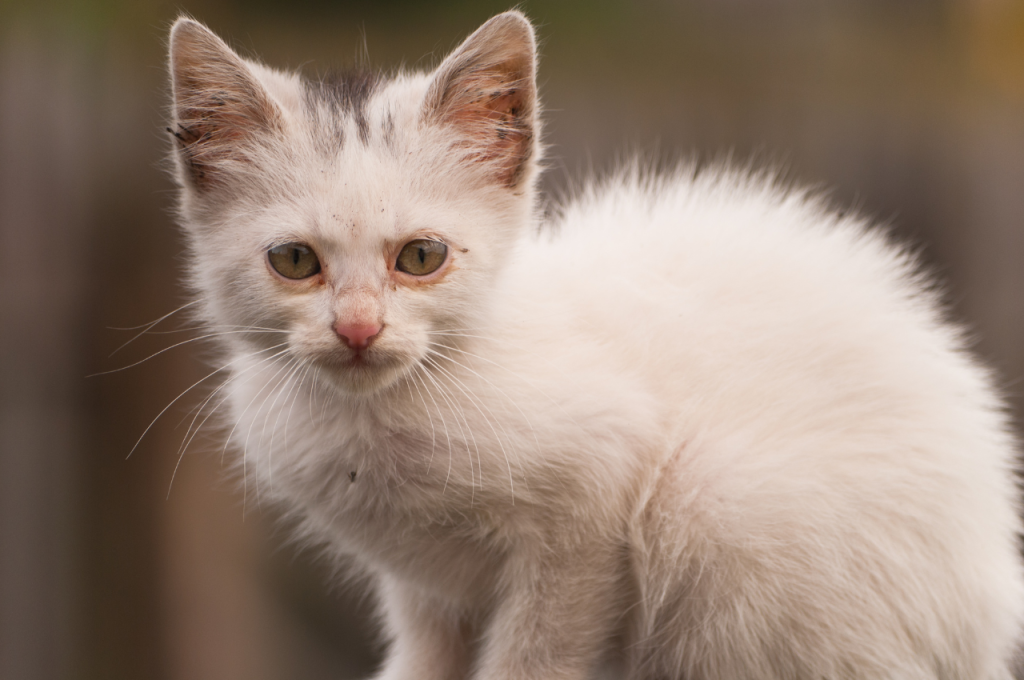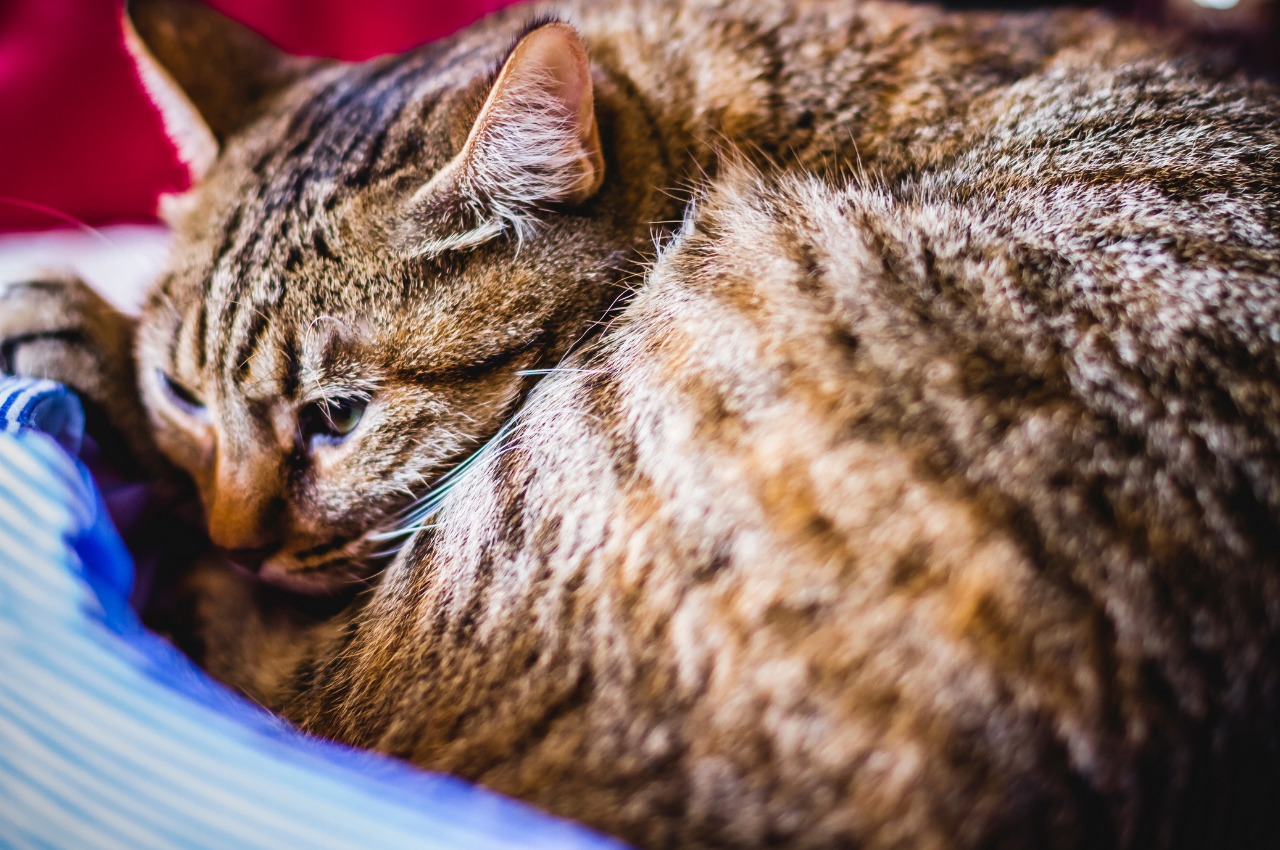A common disease in cats is feline upper respiratory infection, which affects the respiratory system and is caused by viruses or bacteria. This infection can lead to symptoms such as sneezing, coughing, nasal discharge, and fever.
It is important to provide prompt veterinary care to manage the symptoms and prevent complications. Additionally, another prevalent disease in cats is feline urinary tract disease, which can result in urinary blockage or inflammation. This condition often causes frequent urination, blood in the urine, and discomfort. Regular veterinary check-ups, a balanced diet, and proper hydration can help prevent and manage these common diseases in cats, ensuring their overall health and well-being.
Feline Health: Common Concerns
Feline health is essential to a cat’s well-being, with several common concerns that every cat owner should be aware of. Issues like obesity, dental disease, and parasitic infections (such as fleas or worms) are frequently encountered. Cats are also prone to urinary tract infections, especially males, which can lead to serious complications if left untreated. Respiratory issues, including cat flu, are more common in younger and unvaccinated cats.

Additionally, chronic kidney disease and diabetes are health conditions that can arise as cats age. Regular veterinary check-ups, a balanced diet, proper grooming, and staying up to date with vaccinations can help manage and prevent many of these common health concerns, ensuring a long and healthy life for your feline friend.
Recognizing Signs Of Illness In Cats
Cats can suffer from a variety of common diseases, and it’s important for pet owners to be able to recognize the signs of illness in their feline companions. Common diseases in cats include feline upper respiratory infections, feline lower urinary tract disease, and periodontal disease. Recognizing the signs of these illnesses early can help prevent them from progressing and ensure that your cat receives prompt medical attention.
Preventive Measures For Feline Well-being
Preventive measures are crucial for maintaining the well-being of cats. Regular veterinary check-ups, vaccinations, and parasite control are essential for preventing common diseases in cats. Additionally, providing a balanced diet, plenty of fresh water, and regular exercise can help keep your cat healthy and happy.
Upper Respiratory Infections
Cats, like humans, are susceptible to various diseases and infections. One common health issue that cats often face is upper respiratory infections. These infections affect the respiratory system of the feline, causing discomfort and sometimes severe illness. Understanding the causes, symptoms, treatment, and recovery process is crucial for cat owners to ensure their pet’s well-being.
Causes And Symptoms
Upper respiratory infections in cats can be caused by a variety of factors, including viral and bacterial infections. The most common viruses responsible for these infections are feline herpesvirus and feline calicivirus. These viruses are highly contagious and can be transmitted through direct contact with infected cats or through sharing contaminated objects such as food bowls or bedding.
The symptoms of upper respiratory infections in cats are similar to those experienced by humans with colds or flu. These may include:
- Sneezing
- Coughing
- Nasal congestion
- Runny nose
- Watery or inflamed eyes
- Loss of appetite
- Lethargy
It’s important to note that these symptoms can vary in severity depending on the individual cat and the underlying cause of the infection.
Treatment And Recovery
The treatment of upper respiratory infections in cats focuses on alleviating the symptoms and supporting the cat’s immune system to fight off the infection. In mild cases, the infection may resolve on its own without the need for medical intervention. However, in more severe cases or when secondary bacterial infections occur, veterinary treatment is necessary.
Treatment options for upper respiratory infections in cats may include:
- Antibiotics to combat bacterial infections
- Antiviral medications to target the underlying viral infection
- Symptomatic relief measures such as nasal decongestants or eye drops
- Hydration therapy to ensure the cat remains well-hydrated
During the recovery process, it is essential to provide a comfortable and stress-free environment for the cat. Ensuring proper nutrition, plenty of rest, and maintaining a clean living space can aid in the cat’s recovery. Regular monitoring of symptoms and follow-up visits to the veterinarian are crucial to ensure the infection is fully resolved.
Feline Lower Urinary Tract Diseases (fluid)
Feline Lower Urinary Tract Diseases (FLUTD) encompass a group of common conditions affecting the bladder and urethra of cats. These conditions can cause discomfort and pain, and may even lead to life-threatening situations if left untreated. Understanding FLUTD is crucial for pet owners to recognize and address the symptoms, and to seek appropriate care and management.
Understanding Flutd
FLUTD refers to a variety of conditions affecting the bladder and urethra in cats, including urinary stones, urethral blockages, and urinary tract infections. Symptoms may include straining to urinate, bloody urine, and excessive grooming of the genital area. Male cats are particularly prone to developing urethral blockages due to their narrow urethra.
Management And Care
Proper management and care of FLUTD involve a combination of strategies, including dietary changes, increasing water intake, and stress reduction. Ensuring adequate water consumption by offering wet food and multiple water sources can help prevent urinary issues. Additionally, providing a stress-free environment and regular veterinary check-ups are essential for managing and preventing FLUTD.
Kidney Disease In Cats
Kidney disease is a common health issue in cats that can significantly impact their quality of life. The kidneys play a crucial role in filtering waste and maintaining overall health, making it important to understand the different aspects of kidney disease in cats.

Chronic vs. acute Kidney Failure
Chronic kidney failure in cats typically develops gradually and is often associated with aging. It may result from factors like high blood pressure or genetic predisposition. In contrast, acute kidney failure can occur suddenly and is often linked to factors such as ingestion of toxic substances or urinary blockages.
Dietary Adjustments And Treatments
Dietary adjustments are vital in managing kidney disease in cats. Low-protein diets and controlled phosphorus intake can help reduce the strain on the kidneys. Additionally, treatments such as fluid therapy and medication may be recommended to support kidney function and manage associated symptoms.
Dental Disease: A Silent Culprit
Dental disease is a common issue in cats, often overlooked by pet owners. It can lead to discomfort and potential health problems if left untreated. Regular dental check-ups and proper oral care are crucial for preventing this silent culprit from causing harm to your feline friend.
Dental disease is a common ailment in cats that often goes unnoticed. As cats age, their teeth can develop plaque and tartar buildup, which can lead to tooth decay, gum disease, and other dental issues.
Unfortunately, cats are masters at hiding pain, so it can be difficult to detect dental problems until they have progressed to a more advanced stage. This is why it’s crucial to understand the signs of dental issues and take preventative measures to ensure your cat’s oral health is in tip-top shape.
Identifying Dental Issues
Identifying dental issues in cats can be tricky, but there are a few signs you can look out for. If you notice that your cat has bad breath, red or swollen gums, loose or missing teeth, or difficulty eating, it’s time to schedule a vet visit. Your veterinarian can perform a thorough dental exam to determine the extent of the problem and recommend a treatment plan.
Prevention and Dental Hygiene
The good news is that dental disease is preventable with proper dental hygiene. Establishing a regular dental routine can help keep your cat’s teeth clean and healthy. You can start by brushing your cat’s teeth daily with a soft-bristled toothbrush and toothpaste designed specifically for cats. You can also offer dental treats, toys, and chews that help remove plaque and tartar. In addition, scheduling regular dental cleanings with your veterinarian can help catch any dental issues early on.
In Conclusion Dental disease is a common issue in cats that can lead to serious health problems if left untreated. By identifying signs of dental issues and taking preventative measures, you can help ensure your cat’s oral health remains in top condition. Regular dental cleanings and establishing a daily dental routine can go a long way in keeping your cat’s teeth healthy and strong.
Hyperthyroidism In Aging Cats
Hyperthyroidism in aging cats is a common disease characterized by an overactive thyroid gland. This condition is prevalent in senior felines and can lead to various health issues.
Symptoms Of Hyperthyroidism
- Rapid weight loss
- Increased appetite
- Excessive thirst
- Restlessness and hyperactivity
Options For Management
- Medication to regulate thyroid function
- Radioactive iodine therapy
- Surgical removal of the thyroid gland
Parasitic Infections: Fleas And Worms
Parasitic infections, specifically fleas and worms, are common diseases in cats. These pesky parasites can wreak havoc on your feline friend’s health if left untreated.
Combatting Fleas Effectively
- Prevent fleas by using flea preventatives like topical treatments or oral medications. Keep your cat’s living area clean and vacuum regularly.
- Regular grooming and bathing can also help keep fleas at bay. Consult your vet for flea control products suitable for your cat.
Dealing With Worm Infestations
- Look for signs of worms such as vomiting, diarrhea, or weight loss. Administer deworming treatments prescribed by your vet.
- Prevent worm infestations by keeping your cat indoors, regular deworming, and maintaining good hygiene.
Cancer In Cats: An Overview
Cancer in cats is a common disease that pet owners should be aware of. It can affect various parts of a cat’s body, such as the skin, lymph nodes, or organs. Regular check-ups and early detection are crucial for successful treatment. Cancer is one of the most common diseases in cats, and it can affect cats of any age. Cancer is a disease that occurs when abnormal cells in the body grow out of control. These cells can form tumors and invade nearby tissues, which can cause a range of symptoms. Cancer can affect any part of a cat’s body, including the skin, bones, blood, and organs.
Common Types Of Feline Cancer
There are many different types of cancer that can affect cats. Some of the most common types of feline cancer include:
- Skin cancer
- Lymphoma
- Leukemia
- Bone cancer
- Oral cancer
- Bladder cancer
Each type of cancer presents with different symptoms, and some are more aggressive than others. Early detection and treatment are key to improving a cat’s prognosis.
Advancements In Treatment
In recent years, there have been significant advancements in the treatment of feline cancer. Some of the most promising treatments include chemotherapy, radiation therapy, and surgery. These treatments can help to shrink tumors, slow the progression of the disease, and improve a cat’s quality of life. In addition to traditional treatments, there are also alternative therapies that can be used in conjunction with conventional treatments. These therapies include acupuncture, herbal medicine, and dietary changes.

Overall, the key to successfully treating feline cancer is early detection and prompt treatment. If you notice any unusual symptoms in your cat, such as lumps or bumps, changes in appetite or behavior, or difficulty breathing, it’s important to seek veterinary care right away. With proper care and treatment, many cats with cancer can enjoy a good quality of life for years to come.
Conclusion
Cats are susceptible to a variety of diseases, but one of the most common is feline lower urinary tract disease (FLUTD). It’s a painful condition that affects the bladder and urethra and can lead to serious health complications if left untreated.
Fortunately, there are ways to manage and prevent FLUTD in cats, including a balanced diet, plenty of water, and regular check-ups with a veterinarian. By being aware of the signs and symptoms of FLUTD, cat owners can take proactive steps to keep their feline friends healthy and happy.
